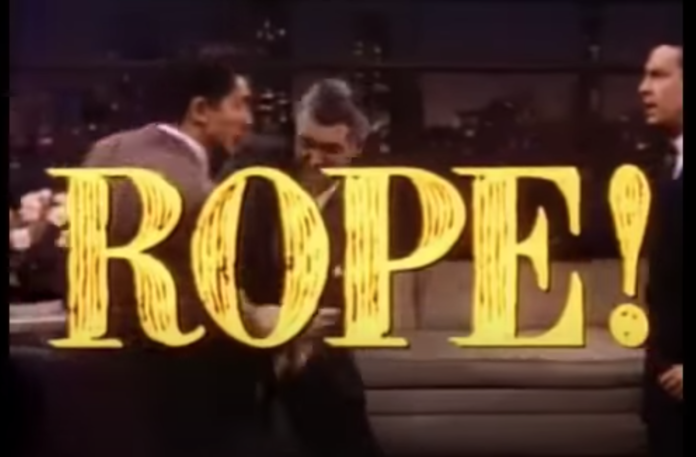
In a bid to add historical context to some of its classic movies, Turner Classic Movies (TCM) has been putting new introductions on a series of significant older films which may now seem “troubling and problematic” to some modern viewers. One such list of 18 such films has been curated by the popular television channel in their “Reframed: Classic Films in the Rearview Mirror.” The brief video introductions explain the context of the films to avoid them falling victim to “cancel culture.”
“Films are history. I don’t think any film should be cancelled, I just think it is important that the ‘problematic’ nature of some of the films be acknowledged. I always wince when someone shows up in a film in blackface,” said TCM Ambassador Jeff Lundenberger, who lives in Asbury Park, NJ with his husband. “If I know beforehand, it’s a little easier to take. The piece about blackface that they show regularly is great. It goes hand-in-hand with the Reframed series.”
“Rope” is a film which is rooted in the Leopold and Loeb murder case of the early 1920s. The film, like the murder case, concerns a pair of gay lovers who plan and commit a murder together.
How can we watch this film comfortably today knowing the audience in 1948 was perhaps seeing the two men as deviant homosexuals who kill? An interesting fact about “Rope” is both of the main actors, Farey Granger and John Dall, were gay in their private lives. The screenwriter, Arthur Laurents, was openly gay in the 1940s. While the play the film was based on was clear about their being lovers, you wouldn’t — or even couldn’t — see that in a film shot nearly 75 years ago.
“When I spoke with Farley Granger about ‘Rope’ I learned it was one of his first major roles, he was not having success as an actor,” shared PGN’s resident film critic Gary Kramer, who is a fan of the classic. “They needed to find the right project for him. They didn’t get into the subject, but Dall and Granger were told to play it as if they were in love. The idea of the deviant homosexual was perpetuated a long time because of how society viewed gay men. I think it’s important to remind viewers that these films are a product of their time and providing context for a new generation.”
The most obviously troublesome film on the TCM list is the much-loved “Gone With the Wind,” one of the highest grossing films in history. In the updated version, the film gets a new introduction by Jacquleine Stewart, an African-American film historian and writer. She reminds viewers the legend of the gracious life in the Old South was perpetuated by this award-winning blockbuster.
Also on the Reframed list, and going back to Lundenberger mentioning the troublesome appearance of Blackface in older films, is “The Jazz Singer.” This early “talkie” from 1927 is noted for the use of Blackface by Al Jolson. The movie is partly biographical about Jolson’s life. He regularly performed in Blackface off-screen, so of course it makes an appearance in the movie.
The recent murders of eight women in the Atlanta area has brought about conversations on how white Americans view and treat Asians and promote stereotypes. The fact that “Breakfast at Tiffany’s” includes Mickey Rooney in yellowface certainly needs explaining to modern audiences.
“Looking back at it now, speaking of “Breakfast at Tiffany’s” can you justify Mickey Rooney? No,” Kramer opined. “I can look past how the film downplayed George Peppard’s gay identiy.”
Another film on the list is “Psycho” from 1960. Like “Rope,” we see a deviant who, in this case, may be seen as the cross-dressing killer stereotype. It’s a popular trope employed in films such as 1968’s “No Way to Treat a Lady” and 1991’s “The Silence of the Lambs.” But, Kramer and Lundenberger disagree about what the film presents to audiences.
To Lundenberger it’s not a case of Anthony Perkins’ character Norman Bates grappling with gender identity or being a closeted homoseuxual. “It always seemed to me that the film was more about him becoming his mother, or maybe trying to keep his mother alive. It seemed that it was just one more aspect of his mental illness, as opposed to some free-standing thing.”
Kramer feels that since the story was based on a novel, Hitchcock wouldn’t want to change the plot. “The story was shocking? How could the Perkins character not be shocking? It’s so important in the history of cinema. It’s not the cross-dressing or the closeted homosexuality, it’s the cinematography. If it was such a negative stereotype to Perkins — why was he making the sequels 20 years later?”
